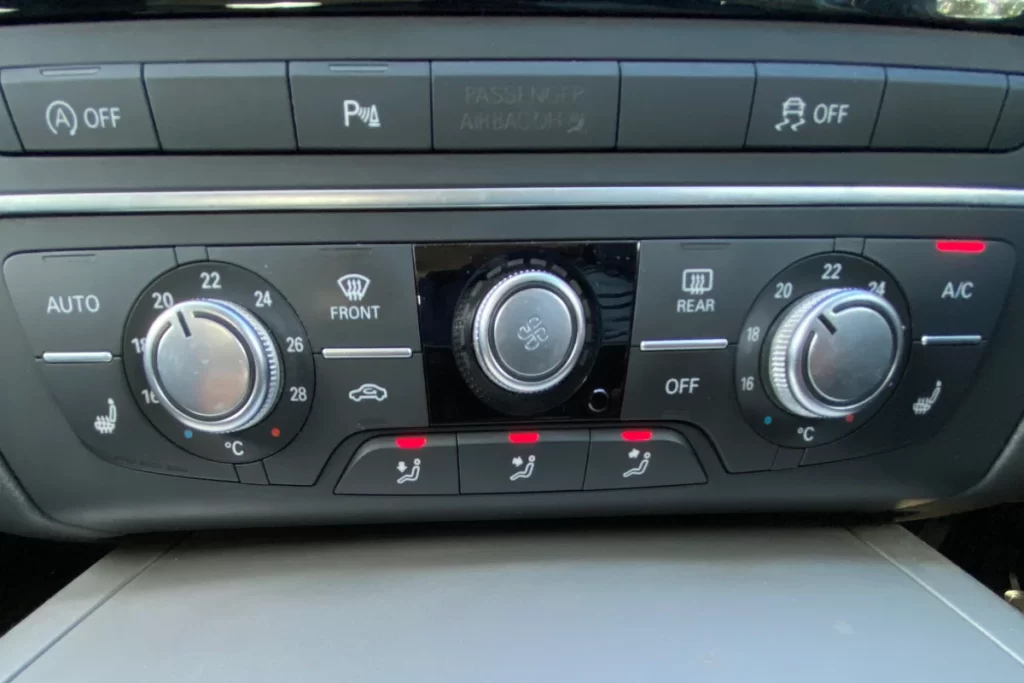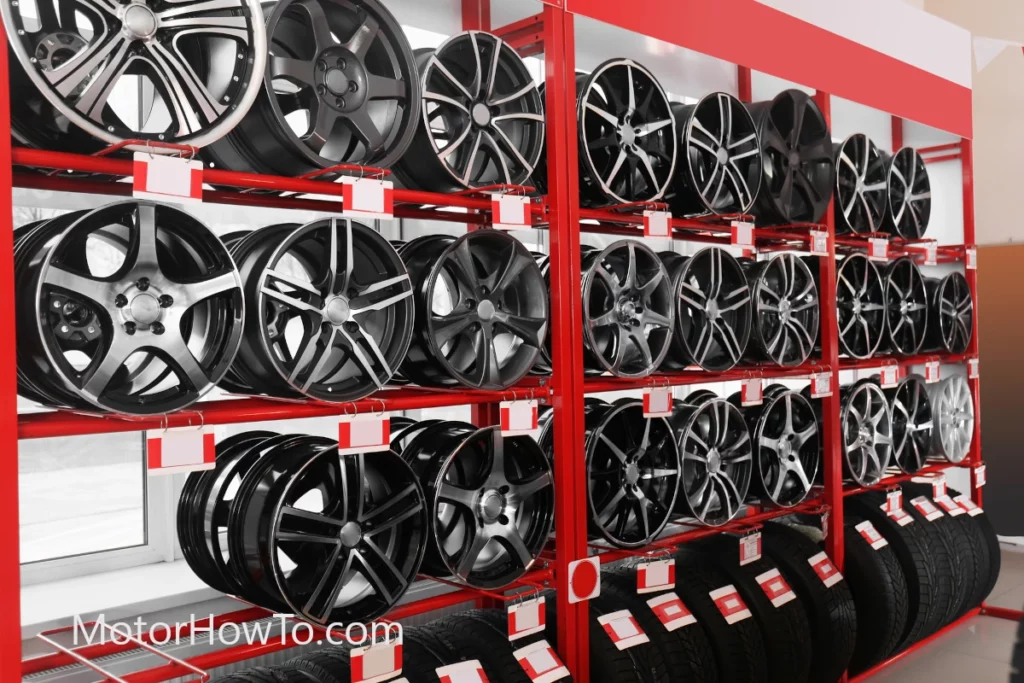There are many things that can go wrong with a car’s climate control unit.
Sometimes these things are obvious and easy to fix; other times, they can be more complex and require extensive work.
Here Is Why Your Car’s Climate Control System Is Not Working.
Climate control systems in cars can malfunction for a variety of reasons such as faulty control modules, failed sensors, bad blend motors, damaged heating or A/C system, etc.

Making repairs easier can be achieved by identifying the cause.
There are a few common reasons why your car’s climate control may not be working, even if you’d rather let a professional diagnose it.
Faulty Control Module
It is the physical unit inside the car’s cabin that is known as the control module, depending on the car’s make and model.
To adjust the cabin temperature, you use this component’s buttons, dials, and screens. Your heating and cooling equipment is likely to include other electronic hardware as well.
There is a wide range of symptoms associated with a faulty climate control module. Having to poke and prod at the controls on a regular basis can lead to mechanical issues.
In addition to damaged screens, broken buttons, and loose dials, these defects can also arise from other sources. Often, the only solution is to replace the entire module.
In some modules, electronic failures can result in unpredictable results. You may experience erratic behavior from your climate control system from time to time. The system may behave strangely, seemingly randomly, when it encounters an electronic problem.
One or More Failed Sensors
You may have a failed sensor if your control module doesn’t work correctly.
It is still necessary to use two sensors for the most straightforward climate control system: one outside the car and one inside the cabin.
Air strength and temperature are determined by these two sensors together.
Additional sensors may also be used by higher-end vehicles with more sophisticated systems. To ensure even heating and cooling inside a car, most modern cars have multiple temperature sensors. You may even have sensors in your vehicle that measure your car’s temperature or adjust for light entering through your windows.
It is easy for any number of your vehicle’s sensors to malfunction, which can have a drastic impact on its heating and cooling efficiency. The car’s computer often shows a fault code when bad sensors are present.
Bad Blend Motors
Control modules and sensors aren’t the only components that make up an automatic climate control system. Air entering the cabin is heated or cooled using specialized motors.
By blending warm and cold air, these electric motors enable the climate control system to maintain the desired temperature inside your vehicle.
Blend motors may stop working entirely, or they may not be able to report their position to the control module because of a malfunction.
In both cases, the motor’s position must be known by the control system to regulate air temperature properly. Even if the motor is not yet causing any problems, it can still produce noticeable noises.
There’s a good chance that you won’t be able to diagnose a problem with your climate control system on your own unless it’s as simple as a blown fuse. Shade tree mechanics are no longer able to diagnose or repair vehicle HVAC systems as they become more complex.
Related:
- What Is Dual Climate Control In A Car? (Explained For Beginners)
- Can I Install Climate Control In My Car? (Read This First)
- Why Is My Car Blowing Hot Air Out When The Heater Is Off? (Solved)
How Can I Diagnose My Car’s Climate Control System?

A do-it-yourselfer usually does not have the skills or tools to troubleshoot automated climate control systems.
You can likely blame the automatic temperature control system for A/C cooling problems that are not caused by an electrical or refrigeration problem (faulty fans, plugged filters, inadequate refrigerant, leaking evaporator, etc.).
Finding the reason, however, requires a special tool capable of retrieving codes specific to the HVAC system (average scan tools can’t do that), as well as a device that can measure voltage.
Self-diagnostic capabilities and fault codes are included in most late-model automatic temperature control systems.
Before replacing an item, a technician must check voltages, resistance, open or shorted wiring, and many other things before replacing the part (at least in principle).
These systems require accurate diagnosis since many replacement parts are extremely expensive.
If the vehicle application requires the replacement of components, the cost can reach hundreds or even several thousands.
If you need to replace a sensor, switch, relay, resistor, vacuum valve, vacuum motor, electric motor, or blower motor, these parts are inexpensive, but installing them (without professional help) can take several hours.
It can be frustrating and challenging to take apart the climate control system and dash. Do-it-yourselfers need to let professionals handle this job unless they are extremely skilled.
Common Problems That Are Easy To Diagnose
| Problem | Cause |
|---|---|
| Cooling is not occurring or the air is coming out of the vents and is warm instead of cool | An air conditioner may not route the air through the A/C evaporator due to a bad BLEND AIR door control motor inside the HVAC unit (a defective compressor, blocked orifice valve, blown fuse or relay, or low refrigerant inside the system). |
| There is a temperature difference between the desired setting and the actual setting (too hot for some people or too cold for others). | In the HVAC unit, BLEND AIR door control motors or interior temperature sensors may malfunction. |
| Air does not blow from vents when the air conditioner or heater is running. | In this case, a bad fan motor or relay could be the cause. |
| There is no flow of air from selected ducts (such as the dash outlets, ground outlets, and ventilation outlets) | A defective motor controlling the door is likely causing the air to not be routed to the right outlets in this case. |
What Controls The Car Climate Control System?
A car’s auto climate control system regulates the temperature inside the passenger compartment by monitoring the ambient air temperature outside. Through solar load sensors, sunlight is compensated for entering the car.
Sunlight is compensated for by electronic “sunload” sensors installed in the vehicle, as well as air temperature sensors.
The temperature within the vehicle can be controlled with vacuum or electronic components in various climate control systems.
Airflow doors are most often operated by electrical machines in modern climate controls.
Each of these motor types operates differently, and they must be replaced with the same type. 5-wire motors are equipped with feedback circuits that let the control module know where they are at all times. 3-wire motors with microchips often self-calibrate and control themselves.
The airflow doors are pushed either way by the 12-volt 2-wire motors. By running the motors fully open and fully closed, the controller calculates their exact position by counting the motor armature revolutions.
These are sophisticated and complex systems.
Is It Expensive To Fix My Climate Control System?
The climate control system clearly offers more convenience than air-conditioning since it allows complete manual control.
The dual-zone, tri-zone, and quad-zone climate options, on the other hand, are ideal if you want a different temperature in the car for your partner or children which makes it expensive to get it in the first place.
Naturally, there is a cost associated with a climate control system to fix. There is a tendency for climate control to be more expensive to fix than air conditioning, requiring more options or higher trim levels and maintenance – although second-hand prices tend to be less drastic.
Repair costs can easily double compared to the ordinary air conditioning system due to its complex sensor and controls.
When you’re on a budget, it makes sense to choose a car with air conditioning (A/C) rather than climate control.
Final Thoughts
There are many things that can go wrong with a car’s climate control system and cause it to stop working.
If you notice problems with your climate control, you should schedule an appointment with the dealership or a trusted mechanic.
These systems are very complex and it is not a good idea to try to repair them yourself unless you have experience.
Sources
Why is my climate control not working? (autofaqtips.com)
Where are the climate control sensors located? chevrolet … (yourmechanic.com)



